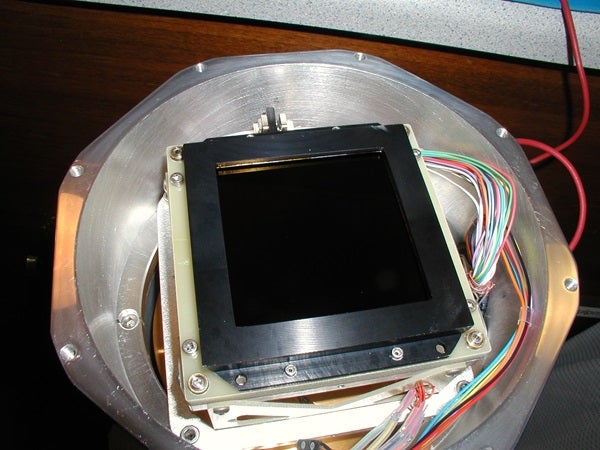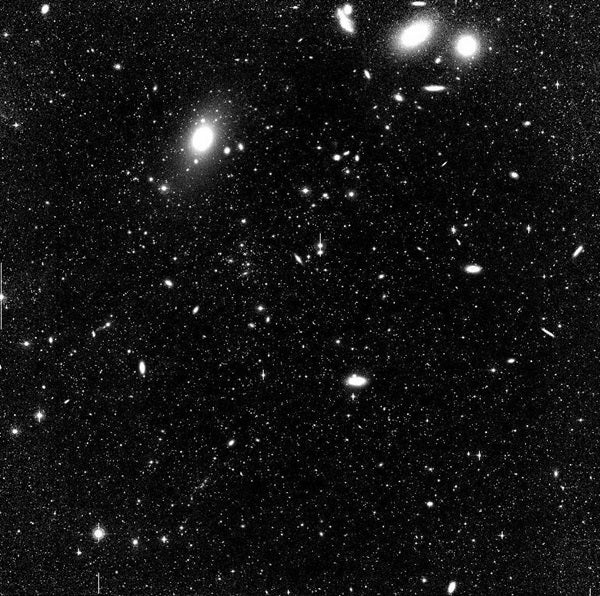Using new instrumentation, Case Western Reserve University astronomers can now view the night sky wider and deeper than before.
While the vast reaches of intergalactic space may appear dark and empty, a new camera installed on the university’s Burrell Schmidt telescope at Kitt Peak National Observatory in Tucson, will bring into clear view the faint sea of orphan stars strewn throughout the nearby Virgo cluster of galaxies.
The design and installation of the new camera system was led by Case Western Reserve astronomer Paul Harding, who also serves as the observatory manager. A new charge coupled device (CCD)—a larger and more sensitive version of the imaging technology found in everyday digital cameras—will enable the astronomers to determine the ages of these stars and unravel the secrets of their origins.
This faint orphan starlight, dubbed “intracluster light,” is formed when galaxies collide with one another inside titanic clusters of galaxies. During these collisions, stars are ripped away from their parent galaxies and strewn throughout the cluster by the gravitational forces at work.
The primary reason for upgrading the telescope’s camera is to determine the color of these stars, according to Mihos and Harding. “Typically younger stars are bluer,” Harding says, “so if we can measure the color of the intracluster light, we can learn about its age.”
Younger ages for the stars would suggest that the Virgo cluster formed relatively recently, over the past few billion years. But because the stars are very faint in the blue, to measure the stellar colors the existing camera needed to be upgraded to be image a wider portion of the sky with even greater sensitivity.
The telescope’s upgraded camera images an area of the sky 1.5° on a side — twice as big as the old camera, and enough to fit nine full Moons in the field of view. “By imaging twice as much sky, we can collect twice as much light at once,” Mihos says, “and that lets us detect this faint starlight even in the blue where it is extremely faint.”
Harding worked with astronomy graduate student Craig Rudick and undergraduate student Colin Slater to install the CCD onto Case’s wide-field telescope at Kitt Peak. Funding for the new camera came from a combination of research grants from the National Science Foundation and Research Corporation to Mihos and fellow Case astronomer Heather Morrison, as well as from departmental endowment funds.












